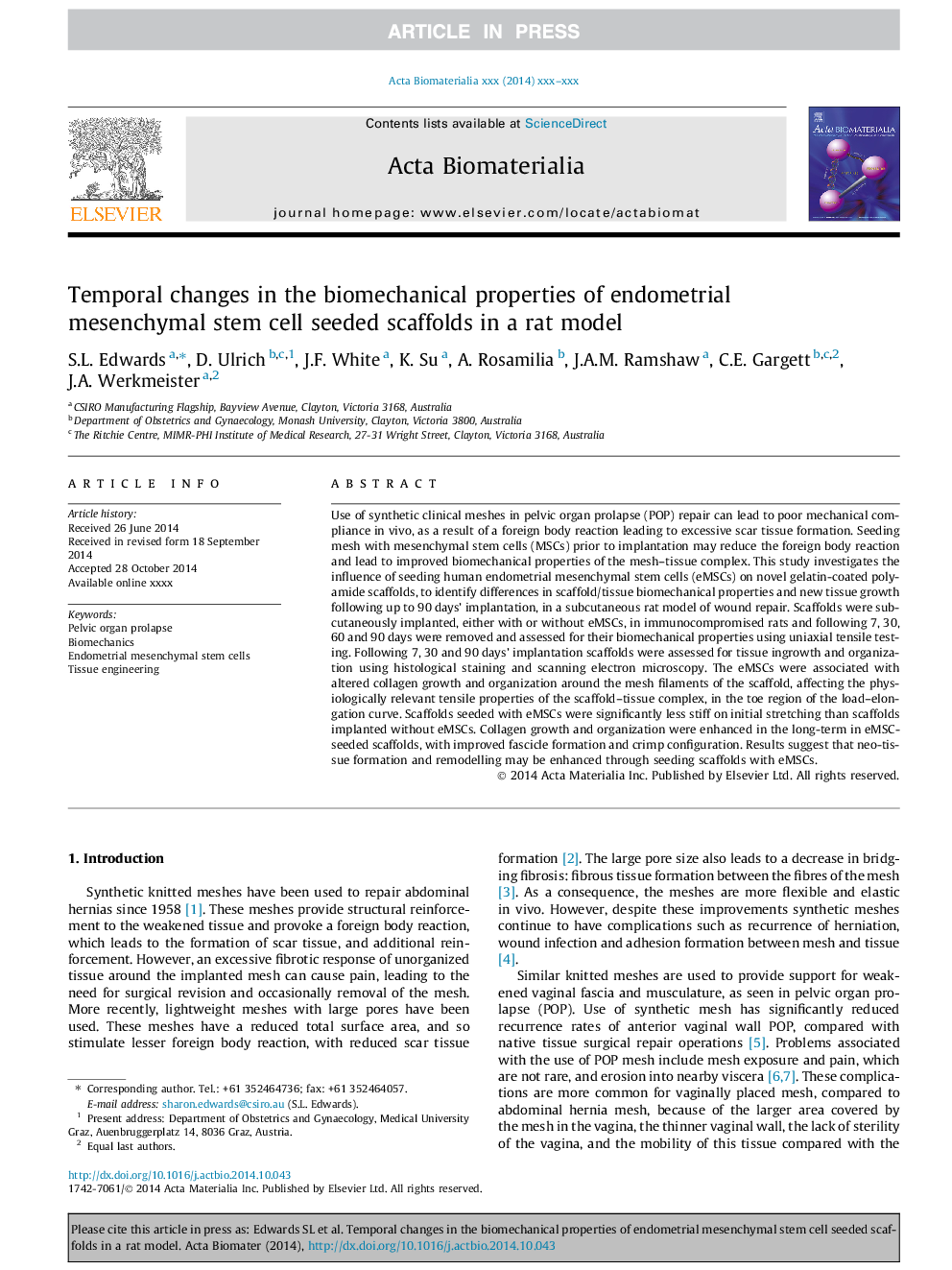| Article ID | Journal | Published Year | Pages | File Type |
|---|---|---|---|---|
| 6483725 | Acta Biomaterialia | 2015 | 9 Pages |
Abstract
Use of synthetic clinical meshes in pelvic organ prolapse (POP) repair can lead to poor mechanical compliance in vivo, as a result of a foreign body reaction leading to excessive scar tissue formation. Seeding mesh with mesenchymal stem cells (MSCs) prior to implantation may reduce the foreign body reaction and lead to improved biomechanical properties of the mesh-tissue complex. This study investigates the influence of seeding human endometrial mesenchymal stem cells (eMSCs) on novel gelatin-coated polyamide scaffolds, to identify differences in scaffold/tissue biomechanical properties and new tissue growth following up to 90Â days' implantation, in a subcutaneous rat model of wound repair. Scaffolds were subcutaneously implanted, either with or without eMSCs, in immunocompromised rats and following 7, 30, 60 and 90Â days were removed and assessed for their biomechanical properties using uniaxial tensile testing. Following 7, 30 and 90Â days' implantation scaffolds were assessed for tissue ingrowth and organization using histological staining and scanning electron microscopy. The eMSCs were associated with altered collagen growth and organization around the mesh filaments of the scaffold, affecting the physiologically relevant tensile properties of the scaffold-tissue complex, in the toe region of the load-elongation curve. Scaffolds seeded with eMSCs were significantly less stiff on initial stretching than scaffolds implanted without eMSCs. Collagen growth and organization were enhanced in the long-term in eMSC-seeded scaffolds, with improved fascicle formation and crimp configuration. Results suggest that neo-tissue formation and remodelling may be enhanced through seeding scaffolds with eMSCs.
Related Topics
Physical Sciences and Engineering
Chemical Engineering
Bioengineering
Authors
S.L. Edwards, D. Ulrich, J.F. White, K. Su, A. Rosamilia, J.A.M. Ramshaw, C.E. Gargett, J.A. Werkmeister,
